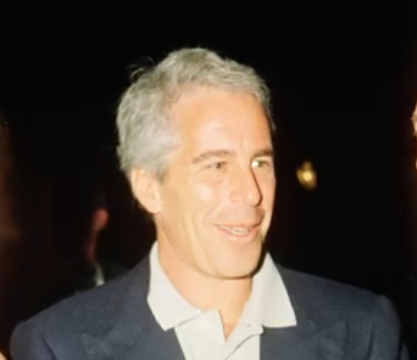The financial tale of Jeffrey Epstein serves as an example of how strategic networking, astute investment tactics, and contentious partnerships can result in extraordinary wealth. His estate’s filings at the time of his death in 2019 showed a fortune of nearly $578 million, which was based on carefully cultivated high-net-worth relationships rather than Wall Street ancestry.
Growing up in working-class areas of Brooklyn, Epstein’s keen mathematical intellect became apparent at a young age. He completed high school early and attended Cooper Union and NYU for a short time without receiving a degree. In 1974, he was accepted as a math teacher at The Dalton School, one of the most prestigious prep schools in New York, despite having no official qualifications. Even though that position was brief, it was crucial because it allowed him to meet the family of Bear Stearns CEO Alan Greenberg, which started a career change that eventually allowed him to enter the boardrooms of billionaires.
Jeffrey Epstein – Personal, Career & Financial Overview
| Category | Details |
|---|---|
| Full Name | Jeffrey Edward Epstein |
| Date of Birth | January 20, 1953 |
| Place of Birth | Brooklyn, New York, USA |
| Nationality | American |
| Education | Attended Cooper Union & NYU (No Degree) |
| Occupation | Financier, Investment Manager |
| Notable Clients | Les Wexner, Leon Black |
| Net Worth at Death | $560–$578 Million USD |
| Major Assets | Manhattan Townhouse, Palm Beach Mansion, Paris Apartment, New Mexico Ranch, Great & Little St. James Islands |
| Cause of Death | Suicide – August 10, 2019, Manhattan Correctional Center |
| Reference |
After joining Bear Stearns in the late 1970s, Epstein became an expert in the nuances of client relationship management, risk, and leverage. Following his departure from the company, he established himself as a personal money manager for extremely wealthy clients, including Leon Black of Apollo Global Management and Les Wexner of L Brands. Epstein had a power of attorney, managed a sizable portion of Wexner’s fortune, and provided advice on both personal and business investments, demonstrating Wexner’s broad trust in him. According to later confirmation by the Senate Finance Committee, Black and Epstein had an equally important professional relationship that resulted in $158 million in payments for tax and estate planning services.
These partnerships had a profoundly positive financial impact. Epstein served as Wexner’s gatekeeper to investment opportunities for more than ten years, using this position to increase his own wealth. Years after Epstein’s 2008 conviction, Black continued to make sizable payments, which demonstrated the atypical loyalty he enjoyed from some of his clients. Epstein’s wealth had already stabilized when both men later distanced themselves, with Black leaving Apollo in 2021 and Wexner expressing regret.
Tragically, Epstein’s properties served as both significant sites in the accusations against him and symbols of his way of life. Once thought to be Manhattan’s largest private residence, his $50 million townhouse on the Upper East Side was filled with rare artifacts and art collections. His lavish lifestyle was evident in his expansive New Mexico ranch, Palm Beach mansion, and Paris apartment. But the most notorious were his two Caribbean islands, Little St. James and Great St. James, which were bought for more than $28 million in total and later sold to billionaire Stephen Deckoff for $60 million.
The preservation of his fortune was made possible in large part by financial institutions. Despite his criminal history, JPMorgan Chase allowed large cash withdrawals for over ten years, and Deutsche Bank remained associated with him until 2018. In order to settle lawsuits alleging they made money off of or disregarded warning signs about his trafficking network, both banks later had to pay expensive settlements—$75 million in the case of Deutsche Bank and undisclosed amounts for JPMorgan.
Strategic social engineering allowed Epstein to keep his standing with powerful people even after a public scandal. He hosted scientists, tech tycoons, politicians, and members of the royal family frequently in his homes or on his private jet. Whether used for prestige or influence, these connections gave him an air of legitimacy that concealed the illegal behavior claimed in the indictments.
His comprehensive financial plan included aggressive tax planning, offshore structures, and shell corporations, all of which greatly decreased his and his clients’ liabilities. Although these methods were legal in many ways, they kept wealth hidden from the public and enabled him to reinvest money quite effectively. His net worth was remarkably stable due to a combination of his legal advisory work, astute asset acquisition, and contentious transactions.
Investigators discovered a carefully diversified portfolio—$380 million in cash and investments, valuable real estate holdings, and company equity—when his arrest in July 2019 rekindled their interest. Nevertheless, concerns remained regarding whether illegal leverage, including possible blackmail, had played a significant role in his ascent despite the court documents’ extreme transparency.
Settlements for dozens of survivors were made possible by the liquidation of Epstein’s assets in the years after his passing. Every real estate transaction and financial statement has revealed a new aspect of his business practices, exposing a man whose success depended as much on perception as on statistics. The financial dismantling is a sobering reminder of how the machinery of wealth can obfuscate accountability for years, while for others it represents partial justice.


